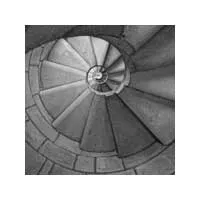When disaster strikes and fire ravages your home, it’s natural to want to roll up your sleeves and start cleaning right away. The urge to save money and regain control over your space is strong. But before you grab that sponge, take a step back.
Let’s talk about why DIY fire damage cleanup might not be the smartest move. In this article, we’ll explore five hidden dangers that come with tackling fire restoration on your own. You’ll also learn why calling in the pros isn’t just easier—it’s safer and smarter too.
KEY TAKEAWAYS
- DIY fire cleanup can expose you to hidden toxic materials.
- Fire may compromise structural integrity, posing safety risks during cleanup.
- Proper smoke and soot removal requires specialized equipment and techniques.
- Water damage from firefighting efforts can lead to mold growth.
- DIY restoration may complicate insurance claims and future property sales.
Exposure to Hazardous Materials
Think fire only leaves behind ash and soot? Think again. Fires can release a cocktail of nasty substances you definitely don’t want to mess with. We’re talking asbestos, lead, and mercury—stuff that can seriously mess with your health long-term.
The tricky part? Most of us don’t have the right gear to protect ourselves from these invisible threats. And without professional testing, you might not even know what you’re dealing with. Trying to clean up yourself could spread these contaminants to parts of your home that weren’t even touched by the fire. Yikes!
Structural Integrity Risks
Fire damage isn’t always obvious. Sure, you can see charred walls, but what about the hidden weak spots? That seemingly solid floor might be ready to give way, or electrical wiring could be one spark away from starting another blaze.
Poking around damaged areas without knowing what you’re doing is like playing structural roulette. You could end up hurt from falling debris or unstable walls. This is why getting help from a professional company offering fire damage restoration is always your best choice, considering they have the tools and expertise to spot these hidden dangers and address them safely. And let’s not forget the legal headaches if you DIY repairs on a compromised building. Sometimes, it’s best to let the experts handle the heavy lifting—literally.
Inadequate Smoke and Soot Removal
That smoky smell isn’t just annoying—it’s a sign that the job’s not done. Smoke and soot are sneaky. They get into every nook and cranny, including your air ducts and wall cavities. And they’re not just unpleasant—they can be bad for your health too.
Getting rid of smoke damage is tougher than you might think. Without the right tools and know-how, you might end up making things worse. Scrubbing too hard can embed soot deeper into surfaces.
And don’t even get me started on trying to clean delicate stuff like upholstery or electronics. It takes special equipment and techniques to truly banish that smoky smell and restore your belongings.
Water Damage and Mold Growth
Here’s a plot twist—fire damage often comes with water damage too. All that water used to put out the flames has to go somewhere, and it often soaks into walls, floors, and furniture. If you don’t dry things out properly (and fast), you’re rolling out the welcome mat for mold. Mold isn’t just gross—it’s a health hazard.
And it loves to grow in damp, fire-damaged spots. The kicker? You might not even see it at first. Without industrial-strength dehumidifiers and fans, it’s tough to get everything truly dry. Miss a hidden damp spot, and you could be setting yourself up for a moldy mess down the road.
Insurance and Legal Complications
Think DIY cleanup will save you money? It might cost you big time in the long run. Many insurance policies have clauses about professional restoration. Try to handle things yourself, and you might accidentally void your coverage. Oops!
On top of that, DIY efforts can make it harder to document your losses properly. Insurance companies like to see professional assessments. And if you’re thinking of selling your home someday, having proof of proper restoration can make a big difference. Don’t let your good intentions today create headaches tomorrow.
Wrapping It Up
When it comes to fire damage, sometimes the smartest move is knowing when to call for backup. DIY cleanup might seem tempting, but the risks often outweigh the rewards. Your safety, health, and peace of mind are worth more than any money you might save. So next time disaster strikes, remember—it’s okay to let the pros handle this one.
Sponsored Blog Post




